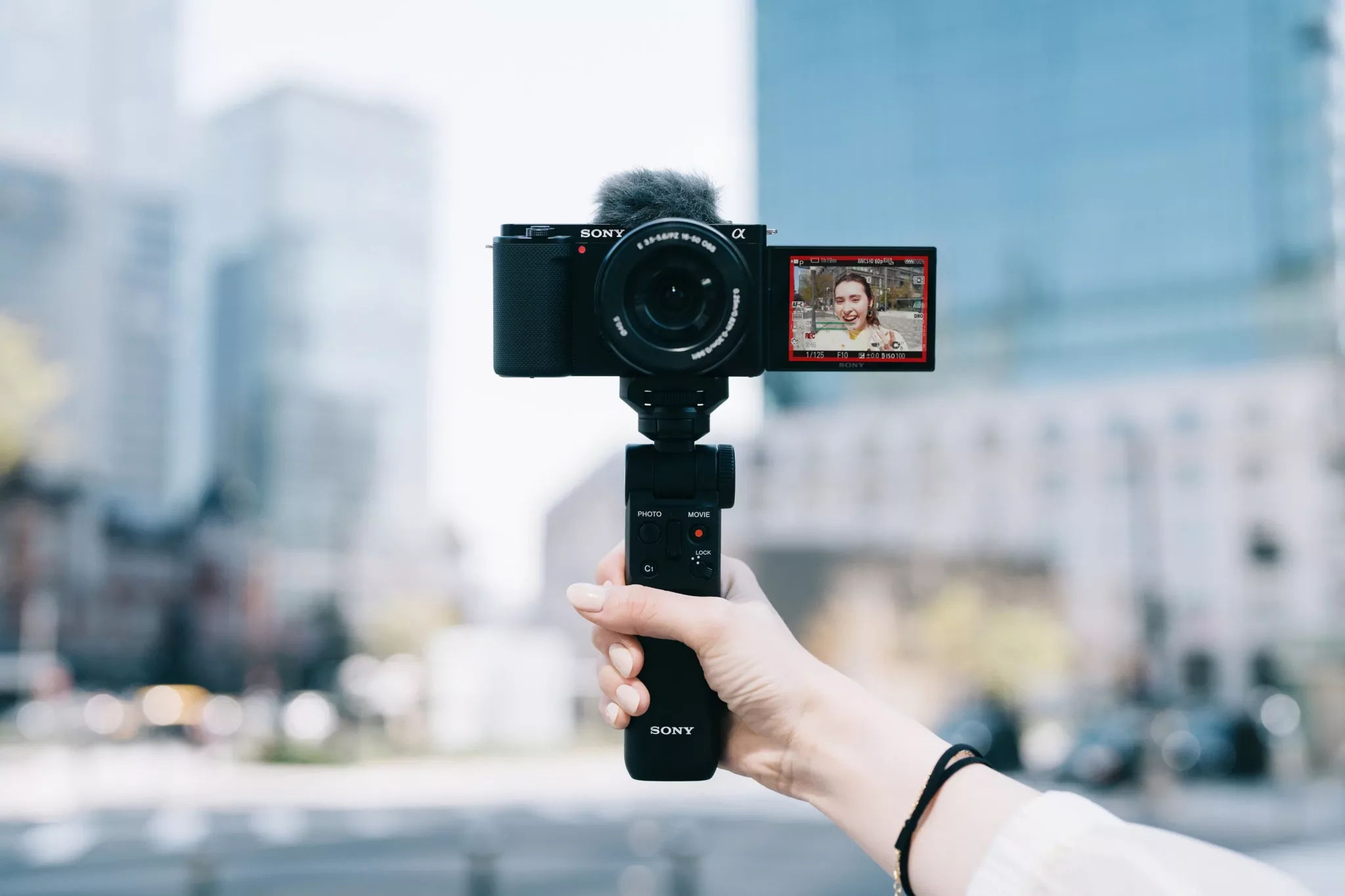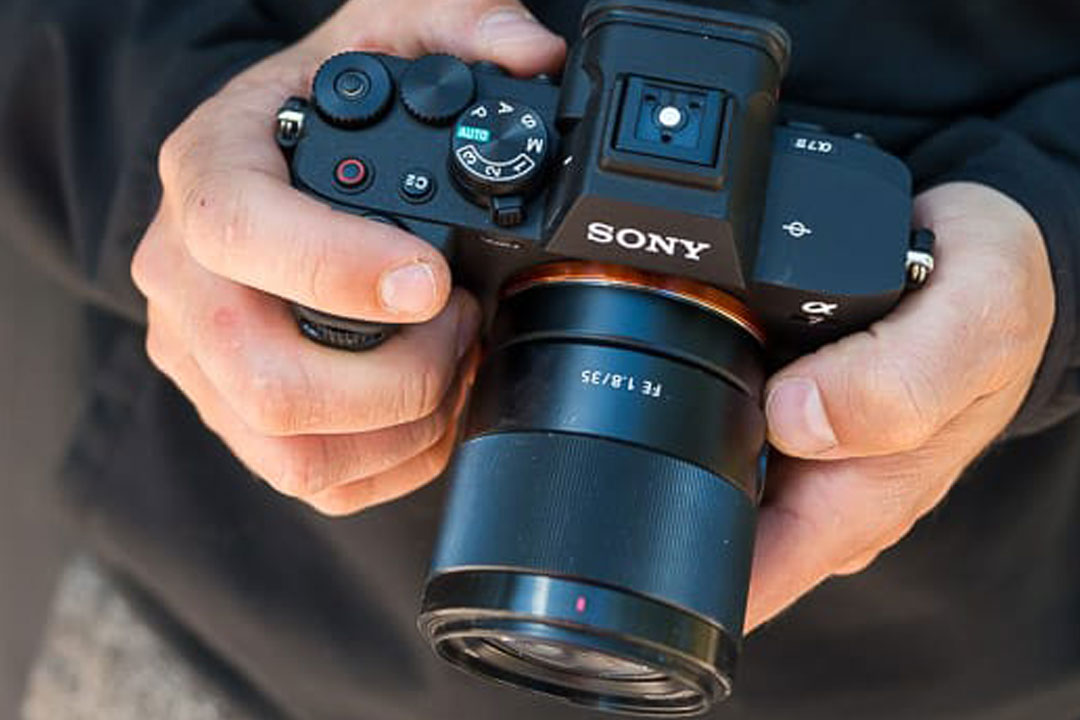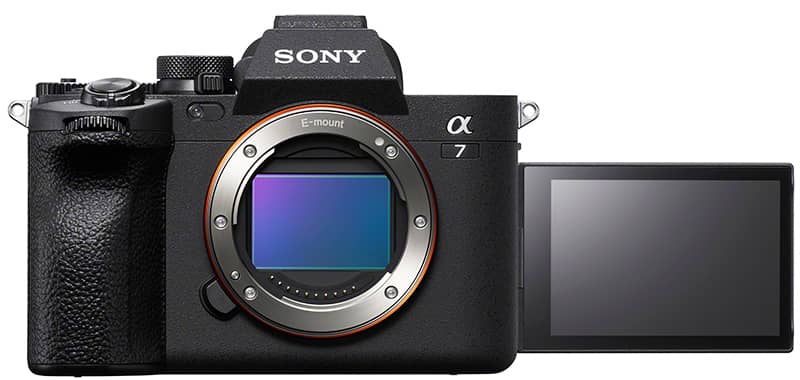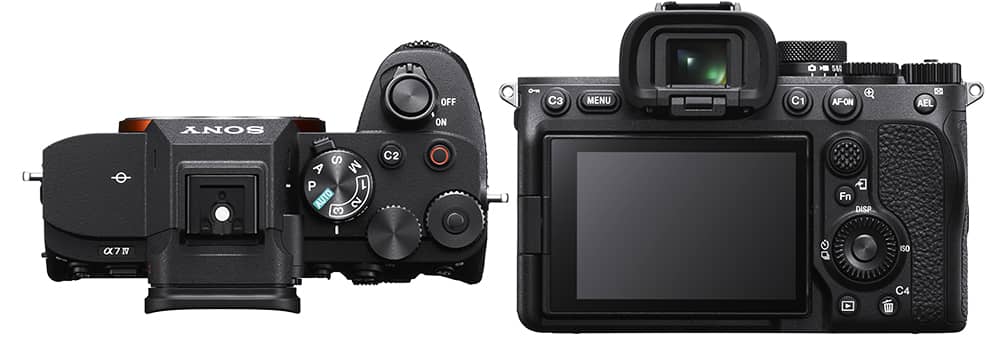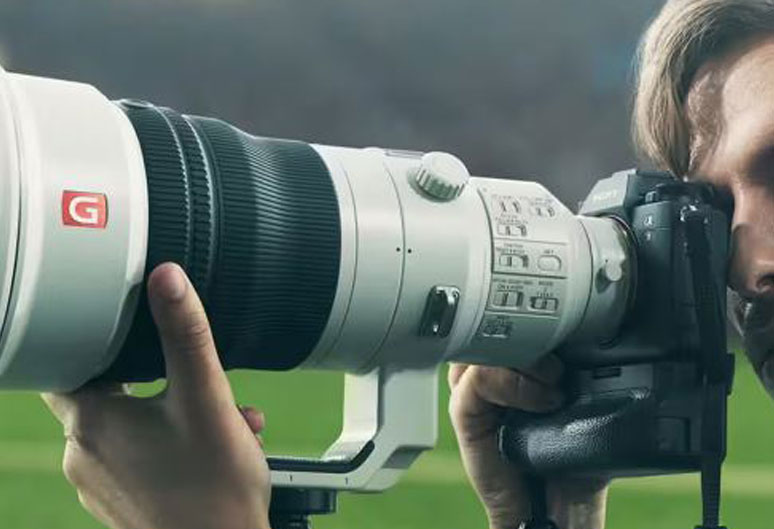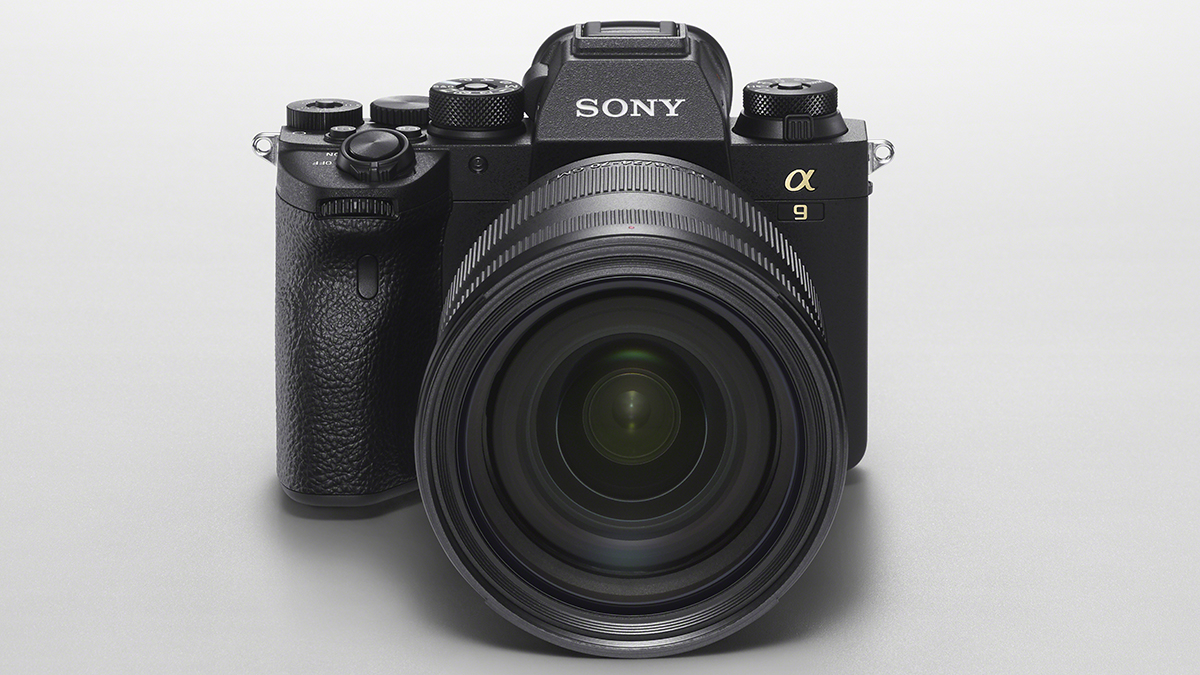With a dedicated line of cameras built entirely around making vlogging easy, Sony is making no secret of courting the YouTube generation. Whether you want to shoot on a fixed-lens compact, a lightweight APS-C mirrorless camera or a pro-spec full-frame mirrorless model, Sony’s vlogging range has options for you. We’ve put together this guide to help you find the right one.
We’ve also looked at the best Sony vlogging lenses, for both APS-C and full-frame cameras, to help you put together your perfect vlogging setup. We’ve made sure to factor in price when making our picks, as we’re aware that many vloggers are operating on quite a tight budget. So, whether you’re starting fresh on a vlogging journey, or are looking to upgrade your kit to the next level, here’s all the best Sony kit to buy…
Best Sony vlogging cameras

While Sony’s various mirrorless and compact cameras have been popular with vloggers for a considerable amount of time, since 2020 the firm has been explicitly targeting this type of user with an entirely separate line of cameras. The ZV series – initially also known as the ZV Vlog cameras, though this naming convention has mostly been dropped – comprises a selection of compacts and mirrorless cameras specifically designed to appeal to vloggers.
The ZV cameras aren’t a radical departure from Sony’s previous cameras; the mirrorless models still use the E mount, so you’ve still got a huge selection of lenses to play with. They are more a refinement of the form, offering a suite of video options with useful features like built-in three-capsule microphones, real-time Eye AF and fully articulated LCD screens.
Here are our picks for the Sony vlogging cameras to buy right now…
Best beginner vlogging camera: Sony ZV-1F
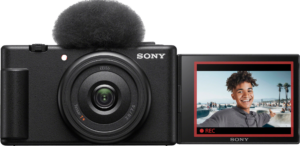
Key specs:
- Compact camera
- 20.1MP 1-inch sensor
- 20mm (equivalent) f/2 lens
- 4K 30p, Full HD 100/120p
- Ports: Micro HDMI, 3.5mm mic input, USB-C
The Sony ZV-1F is the cheapest member of the ZV family, and is the ideal platform for a beginner vlogger to learn the ropes. It’s a compact camera, meaning it has a fixed lens, and it pairs a 20.1MP 1-inch sensor with a 20mm equivalent f/2 lens, giving you a nice and wide perspective that’s ideal for general-purpose vlogging. It shoots 4K at 30p, and Full HD at up to 120p, which is pretty much what you’d expect for a camera at this price point.
The appeal of the ZV-1F lies in how easy it is to use. Sony’s obvious priority with this model is making vlogging as simple as possible, and there are tons of features designed to help you out while shooting. Sony’s peerless Eye Autofocus is one of the stars of the show here, able to doggedly lock focus on a person’s eyes while shooting and ensuring a human subject never drifts out of focus. Sony’s Face-detection and tracking is also second to none.
Slim but solidly built, the ZV-1F is a camera that’s easy to take everywhere with you. It’s the kind of camera you can just pull from your pocket and start recording within seconds. There are plenty of obvious, clearly labelled buttons on the body for activating different settings. Digital stabilisation is also available for shooting handheld on the move, though this will crop into your footage – it’d be better to use the camera with a gimbal if your budget allows.
Though the ZV-1 II has a prime lens, you’ll notice a zoom rocker on the front. This activates a 5x digital zoom function, which while best used sparingly, will allow you to get a little closer to a subject when necessary. There’s a port for a mic as well, though the built-in mics do a pretty decent job. While the ZV-1F is quite a simple proposition, it’s a very effective and usable starter vlogging camera.
Pros:
- Easy to pick up and use
- Good quality from 1-inch sensor and 20mm lens
- Exceptional Eye AF and Face Detection
- Digital stabilisation works well
Cons:
- Digital zoom only
- No built-in ND filter
Best vlogging camera with zoom lens: Sony ZV-1 II
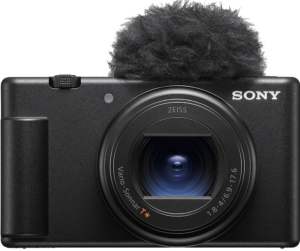
Key specs:
- Compact camera
- 20MP 1-inch sensor
- 18-50mm (equivalent) f/1.8-4.0 lens
- 4K 30p, Full HD 100/120p
- Ports: Micro HDMI, 3.5mm mic input, USB-C
As you might expect from the name, the Sony ZV-1 II is the second iteration of the original ZV-1 camera – which was the first to arrive in the new vlogging line. According to Sony, the main piece of feedback that video shooters offered with regard to the first ZV-1 was that they wished its 24-70mm equivalent lens could go just a little wider. And lo, Sony waved its hand, and it was so – the Sony ZV-1 II is equipped with an 18-50mm equivalent lens, hitting a wider focal length that’s handy for general-purpose vlogging.
At that wide end, you can also take advantage of the f/1.8 maximum aperture for low-light shooting and working with shallow depth of field. This is great to have – just be aware that it does drop precipitously once you start to zoom in, reaching f/4 by the time you’re at 50mm. Elsewhere, this tiny camera makes for a superb vlogging companion – it’s barely the size of a pack of cards, and delivers video quality that’s a demonstrable step up from that of a smartphone. The three-capsule mic once again impresses, delivering audio quality good enough that you’re unlikely to want to increase the footprint of the tiny ZV-1 II by attaching a mic (though, of course, you can).
Elsewhere, Sony has also added an improved touchscreen that’s extremely intuitive to use. Autofocus algorithms have been tweaked for peak performance, and users can also take advantage of the Cinematic Vlog modes to create share-worthy clips straight out of camera.
Pros:
- Useful wide-angle zoom lens
- Great video and audio quality
- Very slim, pocketable dimensions
Cons:
- Max aperture drops at tele end of lens
- Doesn’t zoom in as far as original ZV-1
Best mirrorless vlogging camera: Sony ZV-E10
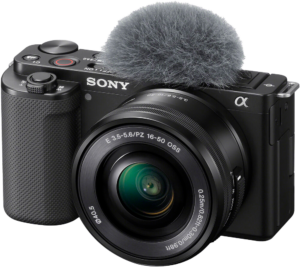
Key specs:
- Mirrorless camera
- 24MP APS-C sensor
- Sony E lens mount
- 4K 30p, Full HD 120p
- Ports: Micro HDMI, 3.5mm mic input, 3.5mm headphone output, USB-C
Once the ZV compacts started arriving, it didn’t take long for vloggers to start wondering when we were going to get a mirrorless entry into the ZV series. That wish was handsomely granted with the ZV-E10 – a capable, lightweight mirrorless vlogging camera, essentially modelled on the Sony A6100 but stuffed with features designed to appeal to vloggers.
The addition of a vari-angle, freely moving LCD screen is a big one, making it much easier to flip the screen to face forward for self-taping without interfering with tripods, microphones or other accessories. Like all ZV cameras, the ZV-E10 also includes a built-in three-capsule microphone (and comes with a clip-on windshield accessory), significantly improving the quality of recorded audio. To bump it up still further, you can also use the 3.5mm port to attach an external mic.
A lightweight and well-balanced camera, the ZV-E10 is well suited to one-handed use and balances nicely with E-mount lenses (see the bottom of this post for our recommendations of lenses to pair with it). Once again, Sony’s autofocus proves itself as one of the best systems in the business. Eye AF, as ever, is unerringly good, and the Face Detection acquits itself well. Video quality is consistently excellent, with 4K topping out at 30p, and we also like that the ZV-E10 provides the option to livestream.
Well priced and simple to use, the Sony ZV-E10 is one of the best mid-range vlogging cameras around, and will suit anyone who wants the convenience of a ZV compact camera, but with the flexibility of interchangeable lenses.
Pros:
- Lightweight and portable
- Loads of E-mount lenses available
- Excellent autofocus, as ever
Cons:
- No built-in stabilisation
Best full-frame vlogging camera: Sony ZV-E1
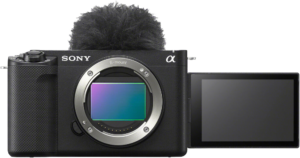
Key specs:
- Mirrorless camera
- 12MP full-frame sensor
- Sony FE lens mount
- 4K 120p, Full HD 240p
- Ports: Micro HDMI, 3.5mm mic input, 3.5mm headphone output, USB-C
The Sony ZV-E1 was something of a surprise on release, and certainly sticks out in the ZV line-up – not least because it’s more than double the price of any of the other models in the series. It’s certainly going to be more than most casual vloggers need, but for those looking for a professional, fully equipped vlogging camera, the full-frame ZV-E1 will fit the bill exactly.
While it looks like a ZV camera – and bears the name – the ZV-E1 inherits a lot of its tech from Sony’s professional Alpha and cinema cameras. The 12MP full-frame back-side illuminated CMOS sensor is borrowed from the FX3 and A7S III, and given that the ZV-E1 also shares the BIONZ XR image processor, it follows that it’s just as much of a beast in low light. With an extended ISO ceiling of 409,600, the ZV-E1 can more or less turn night into day.
Video quality is all around excellent, with 4K available at up to 120p, and most modes supporting 10-bit colour sampling at 4:2:0 or 4:2:2. Sony’s flat Log profile is available for those who like to maximise dynamic range before colour grading their footage in post. However, if you want to speed things up a bit, we quite like S-Cinetone, a pre-graded profile that gives you good-looking footage straight out of camera.
So, if the Sony ZV-E1 inherits the guts of pro cameras like the A7S III and FX3, and is a good deal cheaper, you might be wondering what has been cut out to make that possible? There are a few features missing – the first one you’d notice just from looking at the body is the lack of an electronic viewfinder; Sony is making the bet that vloggers won’t need it. There’s also no option to shoot RAW video, and the FX3 is more geared towards professional cinema use with a supplied handle equipped with XLR inputs. Again, Sony is betting that most vloggers won’t miss these features – and we think they might just be right.
Pros:
- Superb low-light capabilities
- Cine-quality features for a great price
- Effective stabilisation and autofocus
Cons:
- At the expensive end for vlogging cameras
Best Sony vlogging lenses

If you’re opting for a Sony mirrorless camera for vlogging, you’ll need to pick up a lens or two to go along with it. The Sony E-mount has a considerable advantage over mirrorless rivals like Canon and Nikon in that it has simply been around quite a bit longer, so there’s a lot of choice out there. Here are our picks of Sony vlogging lenses to get you started, whether you’re shooting on full-frame or APS-C.
Sony E 11mm f/1.8
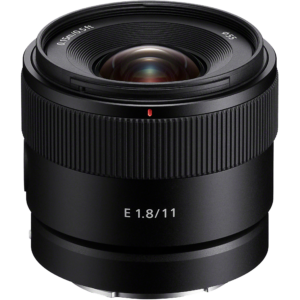
This wide-angle lens for APS-C camera is specifically pitched towards vloggers. Delivering an equivalent focal length of 16.5mm due to the crop factor of APS-C sensors, this lens sits pretty much perfectly in the focal range for general-purpose vlogging and doing pieces to camera. Its wide f/1.8 maximum aperture also lets you make the most of available light and experiment with shallow depth of field. With two linear stepping motors, the autofocus is quick, efficient and virtually silent, and the lens delivers impressive edge-to-edge sharpness even when used wide open at f/1.8
Be aware that the lack of built-in stabilisation may be an issue if you pair the Sony E 11mm f/1.8 with a camera that also doesn’t have stabilisation, such as the ZV-E10.
Sony FE 20mm f/1.8 G
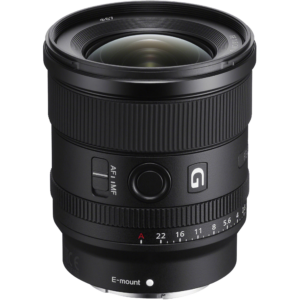
A full-frame prime delivering a wide field of view, the Sony FE 20mm f/1.8 G borrows its dual Linear XD motors from the premium G Master lens series (more on which further down), meaning it offers exceptionally fast focusing action. With a nine-bladed aperture, the FE 20mm f/1.8 G lets you make the most of its f/1.8 aperture for beautiful bokeh in the defocused areas of images.
Sony FE 16-35mm f/4 G PZ
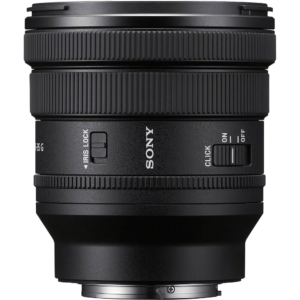
Power Zoom (PZ) lenses are specifically optimised for video. The term means that the zooming function of the lens is powered and controlled electronically by a series of linear motors, rather than by the operator physically turning the lens. This is particularly useful for video for a number of reasons – it allows for smooth zoom movements without the jerkiness often introduced by manual movements, and it means the zoom mechanism can be triggered remotely – great for vloggers who are operating solo. The Sony FE 16-35mm f/4 G PZ also offers built-in stabilisation, edge-to-edge quality and a moisture-resistant build, making it a terrific all-around zoom for vloggers on E-mount.
Sony E 10-20mm f/4 G PZ
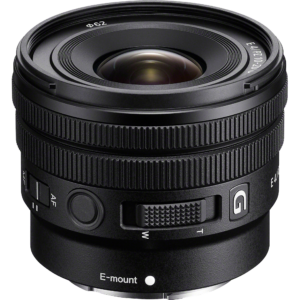
This Power Zoom lens is built for Sony’s APS-C cameras – meaning it’s super-compact, and balances very well on smaller cameras. The Power Zoom mechanism itself is not just beautifully smooth, but also entirely internal, so the balance of the lens doesn’t change when it zooms in and out. Focusing action is reliably fast. The Sony E 10-20mm f/4 G PZ is also well-suited to outdoor shooting, with a dust- and moisture-resistant design. For travel vloggers, this lens is definitely worth picking up.
Sony FE 24mm f/1.4 G Master
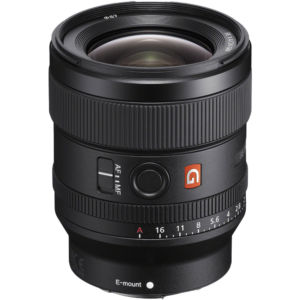
For a premium vlogging lens to make the most of high-end cameras like the ZV-E1, you can’t go wrong with a G Master. These are Sony’s top-flight lenses, delivering optical brilliance in a robust, professional-standard body. The best bet for vloggers is the Sony FE 24mm f/1.4 G Master, a truly optically stunning lens that delivers a superb image from corner to corner. With an f/1.4 maximum aperture, it’s well equipped for low light, too.
All the images used in this blog post are courtesy of Sony.

